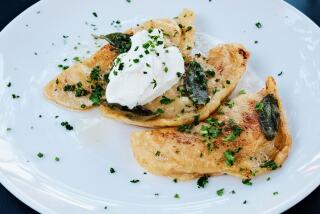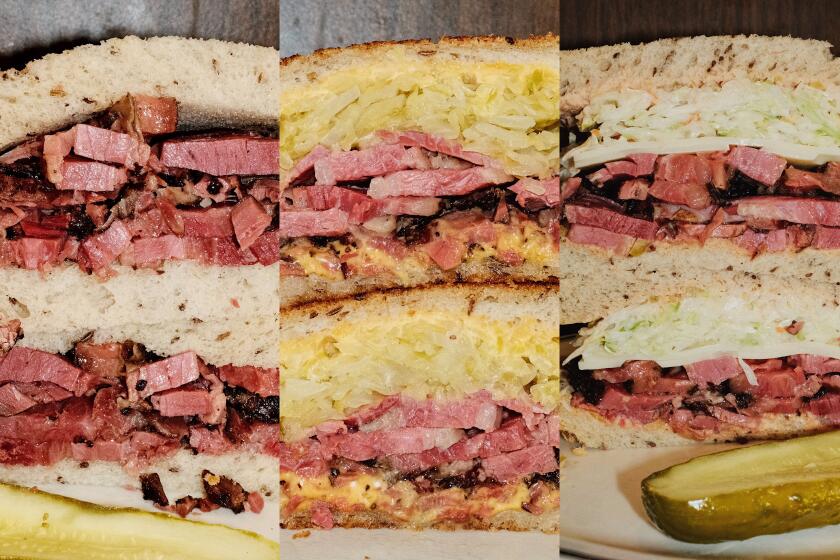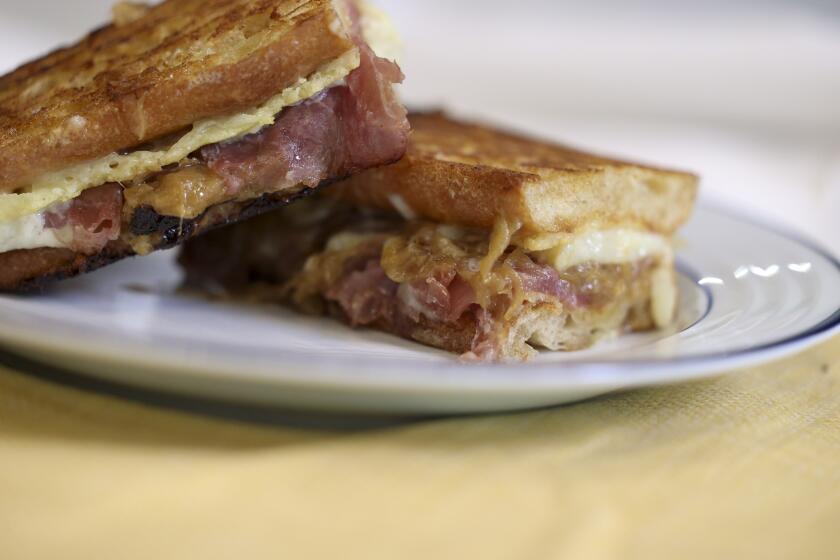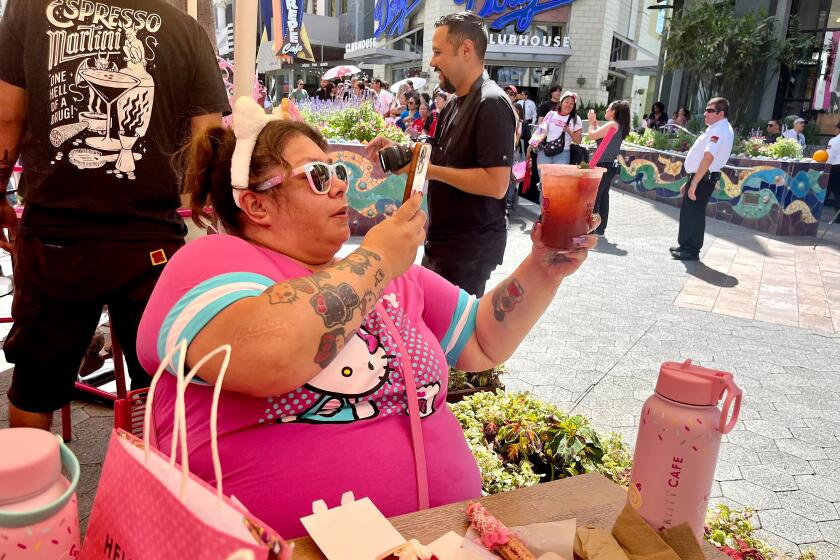Cocktails enter the ice age
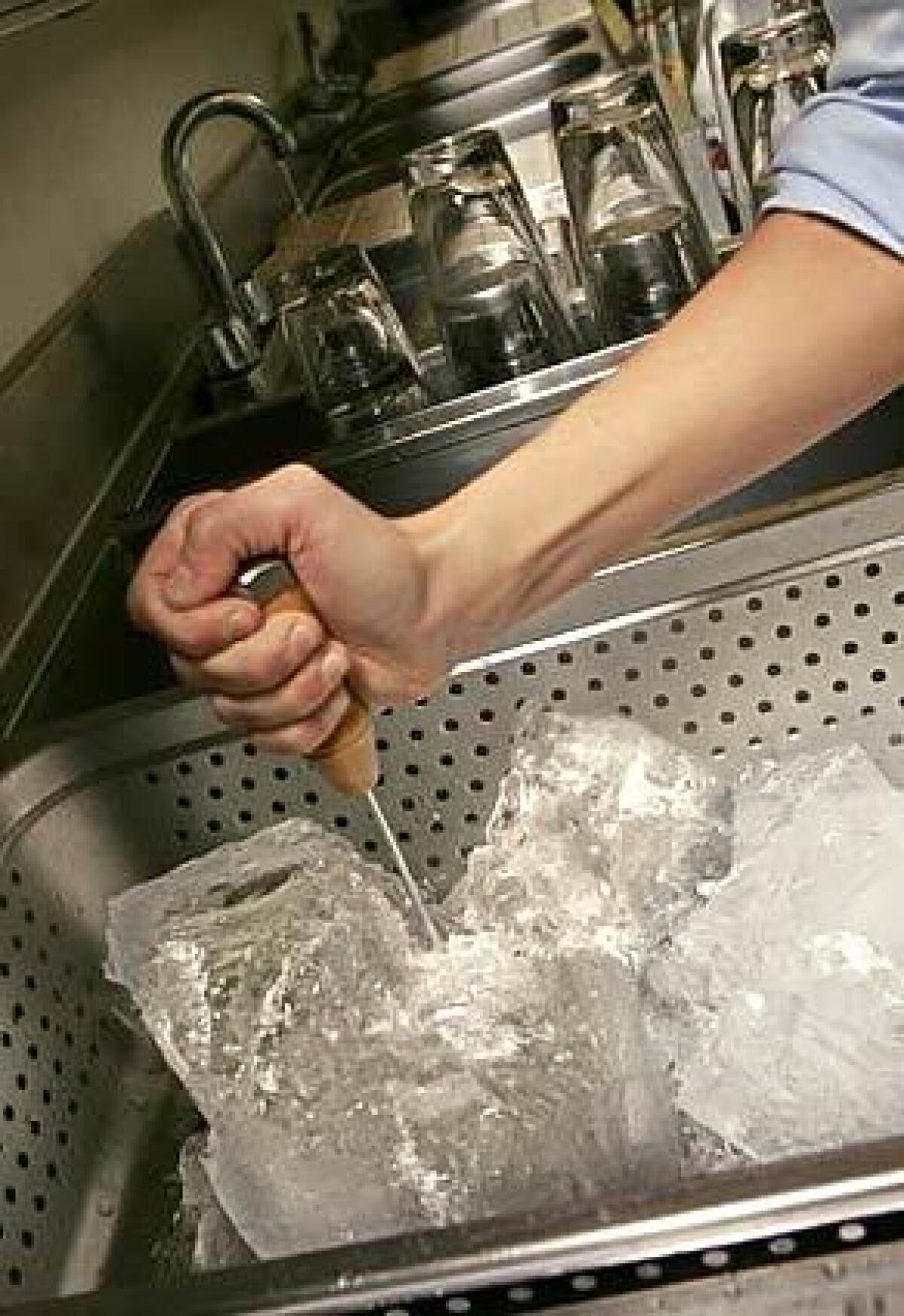
ARE the glaciers spreading, at least to our watering holes? Bartenders around the world have been showing new interest in ice, heretofore an anonymous bit player in cocktails. They’re using extra-dense ice, ultra-pure ice, custom-chipped ice, ice frozen in oversized cubes or novel shapes and “double-frozen” ice. It’s crunch time!
“The question of ice is coming back in vogue,” observes Christian Frizzell, co-owner of the Redwood Bar and Grill in Los Angeles. “So long it’s all been about mixology or infusion of liquor for flavor. But a perfect pour is not just about adding a bunch of stuff. It’s got to be the perfect temperature.”
Though ice is essential for most cocktails — the shaker is the very symbol of a bartender in action — standard mixology guides say little about it. It’s as if bartenders stopped paying attention to ice after the electric blender was invented.
These days, though, the subject has generated some steam (no, wait — wrong metaphor). Tales of the Cocktail, a mixologists’ convention held in New Orleans every year, will even offer a seminar on “The Importance of Ice” on July 19 (probably a nice warm day, if I know New Orleans), featuring New York ice guru Sasha Petraske, famous for calling out specific sorts of ice for particular drinks.
Any self-respecting bar filters the tap water for its ice machine to remove chlorine, and many filter calcium and other hard-water minerals as well. But some are now using premium waters.
“I am starting to make ice cubes with Fiji Water for my Cocktail Reservado list,” says Adam Seger, owner of Nacional 27, a Latin restaurant in Chicago. “For my Richy Roy, I stir 28-year-old unfiltered, cask-proof Glenlivet with sweet vermouth and Fiji ice cubes, then finish with homemade bitters and a homemade maraschino.”
In London, the Shochu Lounge uses ice made from triple-distilled water to ensure that there is no mineral content. The bar keeps a slab of this ice on its counter and attacks it with hammers and an ice saw as needed.
How you hack up your ice is important, say some bartenders. Old-fashioned hand-cracked ice, which includes larger chunks than machine-crushed ice, may be making a comeback. “Crushed ice melts fast,” says Frizzell, who notes that it does have its uses. “It’s usually served in sodas, and it’s really good for that — the best root beer I’ve ever had was made with crushed ice.”
Executive chef and owner David Myers at Sona in Los Angeles is a believer in chipped ice; he likes to be able to control the size of his ice chunks and uses larger, heavier pieces as part of the fruit-muddling process.
“Buy a loaf pan,” he says, “a new one that you don’t use for baking. Fill it three-quarters full with water and freeze. Run it under hot water for a few seconds to loosen the ice block, then chunk it into cubes with an ice pick.
“It’s really beautiful to serve in a cocktail glass — it reflects light and looks like little sparkling crystals. You can cut the block any size you want, so you can make heavier chunks that muddle better in a shaker. The heavier chunks really extract the flavors of whatever you’re shaking.”
A concept taking hold in Japan, says London bartender Ben Reed, is the use of ice balls instead of cubes. The tennis-ball-size pieces of ice melt very slowly because they have the minimum surface area to volume.
*
The cube as logo
IN Chicago, a bar named Rocks uses a giant rock as its logo. “Our signature is a 2-inch-by-2-inch ice cube,” says co-owner George Manta. “My partner and I came up with the name Rocks, then the ice cube as a symbol, and we decided to have big cubes.“Then there was a frantic search to see whether it was feasible. No ice machine available in this country makes big cubes. In Japan they have one, but you can only buy them used, and they come without a warranty or English instructions. So we passed.
“It took a while, but after searching high and low, we found the perfect small tray; it makes four cubes at a time,” he said.
“Part of the thing about the big cube — not only does it look cool, it’s functional. It melts slower, so you’re not watering down your drink so much.”
There happens to be an American-made ice machine, the Kold-Draft, that turns out slightly oversized cubes, a little more than an inch per side. Some ice connoisseurs also prefer the Kold-Draft because it produces particularly clear, dense ice through a novel freezing method. Instead of filling conventional trays with water, it builds up cubes by spraying water upward into molds attached to the underside of the freezer unit — in effect, upside-down ice cube trays.
Only the water that freezes on contact becomes part of the cubes — the rest drips away. Because water with anything dissolved in it is slower to freeze than pure water, this means dissolved minerals and gases that would make for bubbles tend not to make it into the cubes.
The cutting edge in ice, as it were, is anywhere mixologist Petraske has been involved. In 2000, he started Milk & Honey, a New York members-only bar, following it in 2002 with a London branch. He also has consulted with Double Seven, a stratospherically posh New York bar (currently closed for relocation).
All these places are known for serving liquor over chunks of ice that are chipped from blocks and then put back in a freezer to make them as cold as possible. (Milk & Honey also stores its glassware at 40 degrees below zero.)
“The whole point,” says Double Seven mixologist and partner Monika Chiang, “is to preserve the drink, which in most cases means to keep it from being diluted.”
She uses Kold-Draft ice cubes for shaken cocktails and in carbonated drinks such as highballs, because the cubes melt slowly. Hand-cracked pieces, on the other hand, go into drinks with a citrus flavor because they melt faster, so they can dilute the acidity.
The chipped ice, hacked from ice blocks that the Double Seven makes in its own freezer (from water that’s been heated to drive out dissolved gases and prevent the ice from being marred by bubbles), is for chilling liquor on the rocks, not mixed drinks. The chipped pieces end up “kind of the shape of the rocks glass,” Chiang says.
The owner of the London branch of Milk & Honey recently took the ice cult to the French Alps by opening a hotel with a members’ bar in the ski resort of Chamonix. (In case you’re interested, it makes its ice from Evian water.)
*
Chilled seating
FOR that matter, in some northern European cities (and Tokyo and Toronto), there are bars, kept at subfreezing temperatures, where the furniture — and the “glassware” — are made of ice.You get your drink in a squared-off rocks glass, which doesn’t have to be washed (when you’re through, it’s just thrown into the sink) and doesn’t need any ice — crushed, cracked, chipped, cubed or even sphered.
*
charles.perry@latimes.com
Jenn Garbee contributed to this report.
More to Read
Eat your way across L.A.
Get our weekly Tasting Notes newsletter for reviews, news and more.
You may occasionally receive promotional content from the Los Angeles Times.
